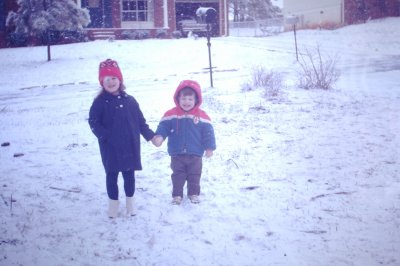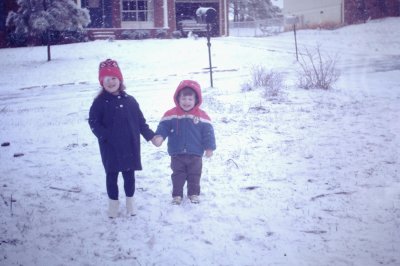Scott Merryfield
Senior HTF Member
As some of you may know, my father passed away back in December. As we were going through all of my parents possessions during the process of moving my mother from northern Michigan to a condo near us in southeastern Michigan, I came across a plethora of old 35mm slides that my father had taken over the years -- the slides are installed in rectangular holders to run through a projector. I filled up three large boxes with these cassettes for the movers to haul downstate.
There is a lot of family history in these slides, so I have decided to start a project to convert them to digital. While I do have a Canon flatbed scanner which I have used to scan small batches of prints (not slides) in the past, that is a very time-consuming process, so I am looking for something more efficient.
So far, it appears the best solution is using one of my camera bodies + a macro lens to photograph each slide. There are quite a few ways to go about doing this. Right now I am leaning towards using a macro focusing rail with a digital slide attachment, and then using my laptop as a backlighting source via an app that will turn it into a light panel. I think once setup, I should be able to photo quite a few slides quickly during a session, and then import them into DxO Photolab to crop and process.
I think my Canon EOS R mirrorless full frame body along with my Sigma 105mm macro lens will be best suited for this task, as well. The macro rail and holder will cost just under $400 from B&H, and the macro rail is something I could probably use for other photography.
There are probably less expensive options out there, so I am open to ideas. I am not really considering a service, as I know I will still have to process the photos that service creates based on past experience (my cousin did this with slides of my grandfather's). Plus, I would have to take the time to sort through all the slides beforehand to decide which to send in order to reduce cost, where if I have a quick, repeatable process of my own I can just sort through the digital versions during processing -- just as I do with my own photos. If I have to correct the photos anyway, I may as well just create the original digital file myself.
There is a lot of family history in these slides, so I have decided to start a project to convert them to digital. While I do have a Canon flatbed scanner which I have used to scan small batches of prints (not slides) in the past, that is a very time-consuming process, so I am looking for something more efficient.
So far, it appears the best solution is using one of my camera bodies + a macro lens to photograph each slide. There are quite a few ways to go about doing this. Right now I am leaning towards using a macro focusing rail with a digital slide attachment, and then using my laptop as a backlighting source via an app that will turn it into a light panel. I think once setup, I should be able to photo quite a few slides quickly during a session, and then import them into DxO Photolab to crop and process.
I think my Canon EOS R mirrorless full frame body along with my Sigma 105mm macro lens will be best suited for this task, as well. The macro rail and holder will cost just under $400 from B&H, and the macro rail is something I could probably use for other photography.
There are probably less expensive options out there, so I am open to ideas. I am not really considering a service, as I know I will still have to process the photos that service creates based on past experience (my cousin did this with slides of my grandfather's). Plus, I would have to take the time to sort through all the slides beforehand to decide which to send in order to reduce cost, where if I have a quick, repeatable process of my own I can just sort through the digital versions during processing -- just as I do with my own photos. If I have to correct the photos anyway, I may as well just create the original digital file myself.








